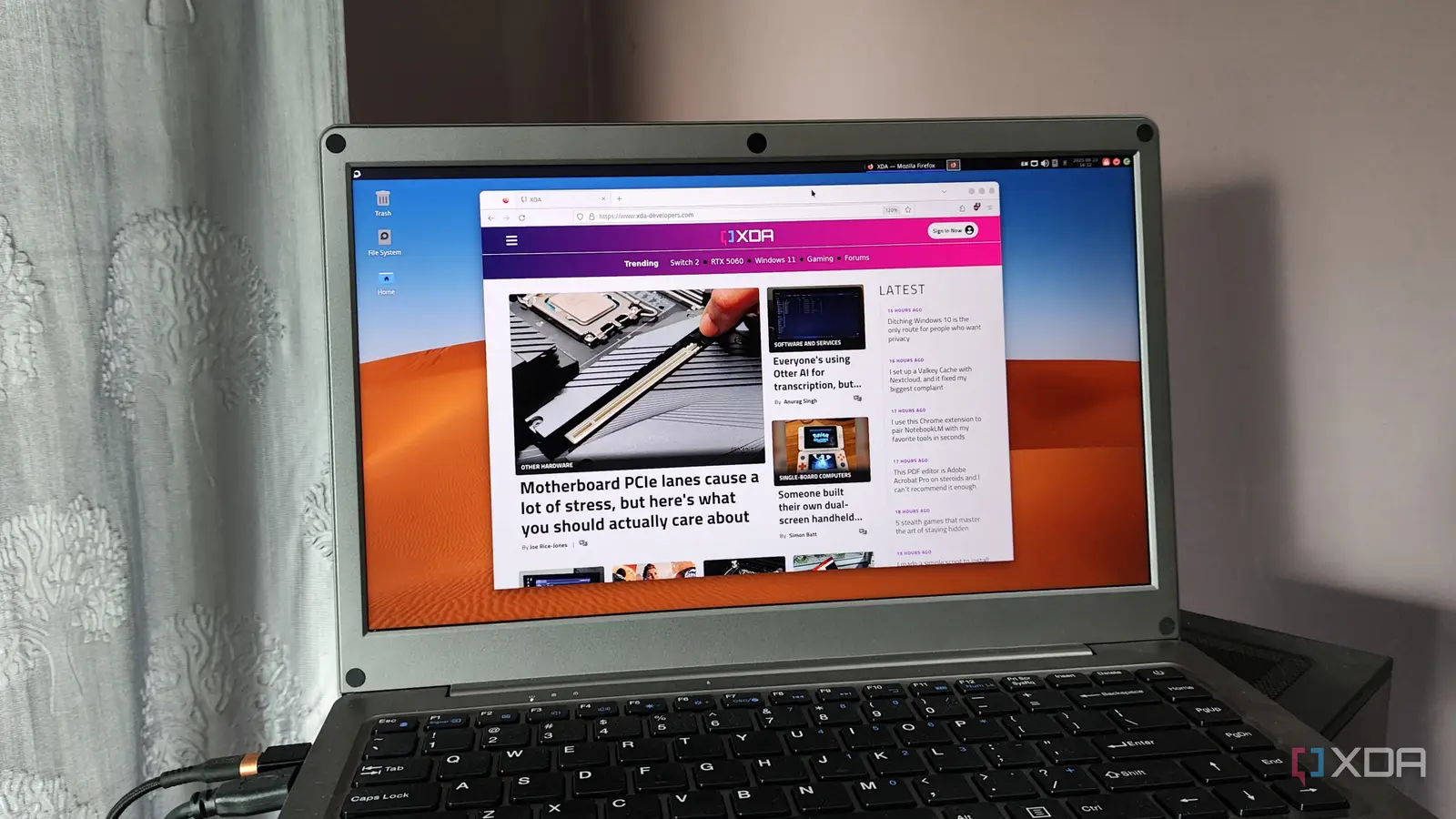
The sheer number of distributions is one of the many factors that separate Linux from Windows and macOS. But if you thought Linux was the only operating system that ships with different flavors, you might want to turn your attention to the FreeBSD ecosystem. This alternative Unix-like OS is home to its own collection of distributions, ranging from the popular router-oriented pfSense and OPNsense to the more obscure (but just as useful) general-purpose distros like DragonFlyBSD and GhostBSD.
Speaking of cool FreeBSD-based distributions, I recently came across NomadBSD while searching for fun distros to try out. Unlike conventional operating systems, it’s meant to be run off a flash drive instead of an SSD (or even an HDD). However, it’s not similar to Tails OS either, as the distro saves everything to the USB drive by default and is meant for educational purposes and testing hardware compatibility rather than preserving your privacy. With my interest piqued, I figured I could try running NomadBSD on my home lab – and the OS worked better than I’d anticipated.
Setting up NomadBSD
Surprisingly simple for a distro based on FreeBSD
After a colossal failure when trying to run FreeBSD on my daily driver (which is a story for another time), I was a bit apprehensive of tinkering with NomadBSD. Luckily, my fears were unwarranted, because NomadBSD is pretty easy to set up. Since it’s meant to be installed on a USB drive, I used Balena Etcher to flash NomadBSD’s ISO file onto a spare 128GB USB 3.2 flash drive instead of relying on my beloved PXE server.
Then, I went through the usual process of modifying the boot settings on the machine I wanted to use as the guinea pig for this experiment. While we’re on the subject, I went with an aged system with a Ryzen 5 1600, 16GB memory, and an Intel Arc A750 – a cursed system featuring an old AMD processor alongside a first-gen Intel GPU. That turned out to be quite the folly, as NomadBSD ended up displaying kernel panic messages during the first boot.
Switching to a different USB drive did nothing, so I replaced the Arc A750 with my trusty GTX 1080, which solved the problem instantly. The rest of the installation sequence was pretty painless and involved the usual keyboard, location, and password settings. But what really caught my eye was the fact that NomadBSD let me choose between a couple of shell and text editing tools – a feature that you may not find on many Linux distros.
Soon, the wizard began installing FreeBSD on my flash drive, and after waiting for nearly 20 minutes for it to work its magic, I was ready to tinker with NomadBSD.
A sleek and responsive UI
Especially useful for old devices
Considering it’s far from a mainstream distro, I’d expected NomadBSD to be a clunky OS with an outdated UI. But one look at NomadBSD’s home screen flipped that notion on its head. The distro uses the Xfce desktop environment, which grants it a sleek interface that’s not only easy on the eye, but also consumes minimal resources. In fact, everything from opening applications to brushing the cursor across the services on the dock felt so snappy that I had a hard time believing I was using a PC that’s nearly a decade old.
Unfortunately, I quickly encountered the second issue – the distro couldn’t connect to the Internet. Luckily, the fix was as simple as switching the IPv4 settings from DHCP to static and assigning the IP address, Subnet, Gateway, and DNS server manually.
With that hurdle cleared, I launched Firefox once again and tried browsing the web. NomadBSD managed to run 15+ tabs without running into performance issues. Playing YouTube videos worked just as well, and there were zero dropped frames even in 4K streams.
Solid collection of pre-installed apps
Another neat aspect of NomadBSD is the sheer number of useful applications that come bundled with the OS. Besides Firefox, the distro includes the Thunderbird mail client. On the design front, you’ve got GIMP pre-installed. Surprisingly, it even includes KeePassXC, which is a solid password manager. Leafpad, Midnight Commander, and Plank also ship with the OS, and the same holds true for Geany, Thunar file manager, and Xarchiver. Meanwhile, the Sakura terminal emulator has some slick transparency and auto-fill facilities – features I never expected an obscure distro to possess, let alone one that belongs to the FreeBSD ecosystem.
It’s compatible with popular FOSS packages
Since I use a lot more tools than the ones that ship with NomadBSD, it was time to install some other packages. Sadly, updating the packages took an absurdly long amount of time due to the terribly slow download speeds – we’re talking an average speed of about 32 KB/s. I blame it on the slow servers in my vicinity, as I encountered similar issues when updating the packages on other FreeBSD distros.
Afterward, I began setting up the rest of my Linux app suite on NomadBSD. Krita, Darktable, and Inkscape ran without any issues after I’d installed all their packages. LibreOffice also worked like a charm, with VS Code, Emacs, and Audacity delivering an equally responsive experience. However, I still had one last test to run…
Persistent storage works pretty well
You can use the same NomadBSD drive with different devices
Since I’d spent a fair bit of time outfitting NomadBSD with my favorite packages, I didn’t want it to get wiped after the next reboot. Luckily, the OS supports persistent storage, meaning it saves the user files onto the USB drive rather than forcing me to set up everything from scratch.
However, its hardware compatibility was something I wanted to tinker with myself. After all, I’d installed NomadBSD onto a portable flash drive, so I wanted to plug it into another system and see how it fares. With that thought stuck in my head, I turned off my old PC and plugged the NomadBSD drive into my daily driver, which uses a Ryzen 5 5600X alongside an RTX 3080 Ti GPU and 32GB of memory. Lo and behold, the OS not only booted into my PC, but it also had all the files and packages I’d set up earlier!
FreeBSD distributions are getting more usable with each passing day
I’d gotten my first taste of FreeBSD with the general-purpose GhostBSD, and it was a pleasant surprise for sure. My reaction to NomadBSD was largely the same, and I’m impressed that a niche OS from the FreeBSD ecosystem has such a gorgeous UI and a solid toolkit. In fact, I plan to grab another USB drive specifically for NomadBSD, partly so I can tinker with it whenever I please, and also because it would go well with my Tails OS flash drive.



